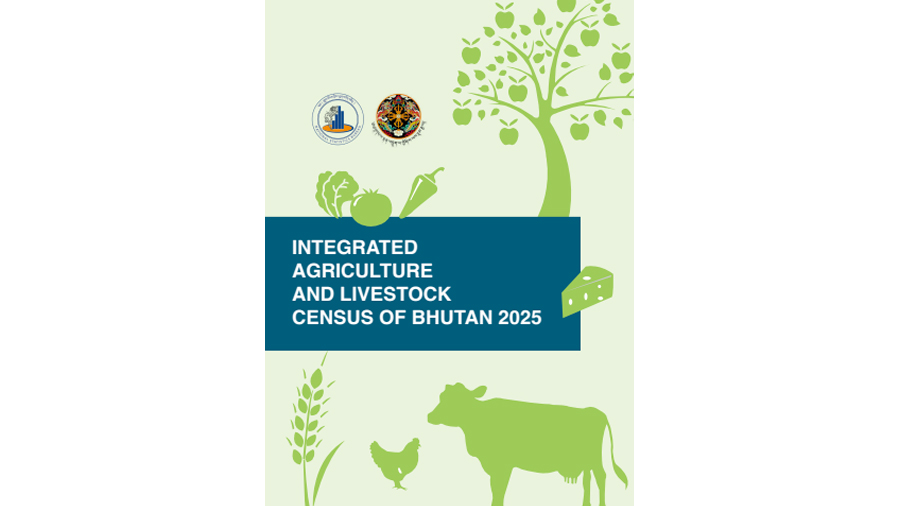 Bhutan produced over 72,000 metric tonnes of cereals and nearly 28,000 metric tonnes of vegetables last year, marking modest growth in agricultural production. However, the Integrated Agriculture and Livestock Census 2025, released today, also reveals concerning trends in livestock, with cattle numbers declining by two per cent and over 14,000 bovine livestock deaths reported across the country.
Bhutan produced over 72,000 metric tonnes of cereals and nearly 28,000 metric tonnes of vegetables last year, marking modest growth in agricultural production. However, the Integrated Agriculture and Livestock Census 2025, released today, also reveals concerning trends in livestock, with cattle numbers declining by two per cent and over 14,000 bovine livestock deaths reported across the country.
The Integrated Agriculture and Livestock Census is based on data collected from over 70,000 farms and 21 government farms.
According to the report, the total cereal production reached 72,177 metric tonnes last year, with paddy continuing to dominate the fields. Irrigated paddy production alone stood at 41,352 metric tonnes, reflecting a 1.8 per cent increase from 2023.
Additionally, Punakha, Monggar, and Paro were the top cereal-producing districts. Other cereal crops, including wheat, buckwheat, barley, millet, and quinoa, also saw an increase.
Vegetable production also rose by four per cent, totalling nearly 28,000 metric tonnes. Wangdue Phodrang, Chhukha, and Paro were the leading vegetable producers.
Over 1,100 metric tonnes of cardamom were produced last year, an increase of 18 metric tonnes compared to the previous year, largely due to an increase in the number of growers.
The report also highlights changing trends in fruit and nut production. Areca nut production increased by nearly 3,000 metric tonnes, while apple and mandarin production declined.
Further, cattle numbers fell by two per cent, although poultry and pig populations increased by 13 and 15 per cent respectively. However, livestock deaths remain a concern, with over 14,000 bovine and more than 166,000 poultry deaths recorded.
According to the report, the primary causes of death were disease, wildlife depredation, and natural causes.
In terms of dairy production, milk production reached 44,038 metric tonnes, with cheese production growing by 11 per cent. However, butter production declined by nearly two per cent, indicating shifts in dairy production trends.
Additionally, beef production dropped by 14 per cent, while pork declined by two per cent. On the other hand, chicken meat production increased by four per cent, and egg production rose significantly to nearly 98 million eggs, a 15 per cent increase from 2023.
The report, NSB says, will help policymakers, researchers and stakeholders with valuable data to support informed decision-making and ensure the country’s agriculture sector remains resilient.
Kinley Bidha
Edited by Kipchu








